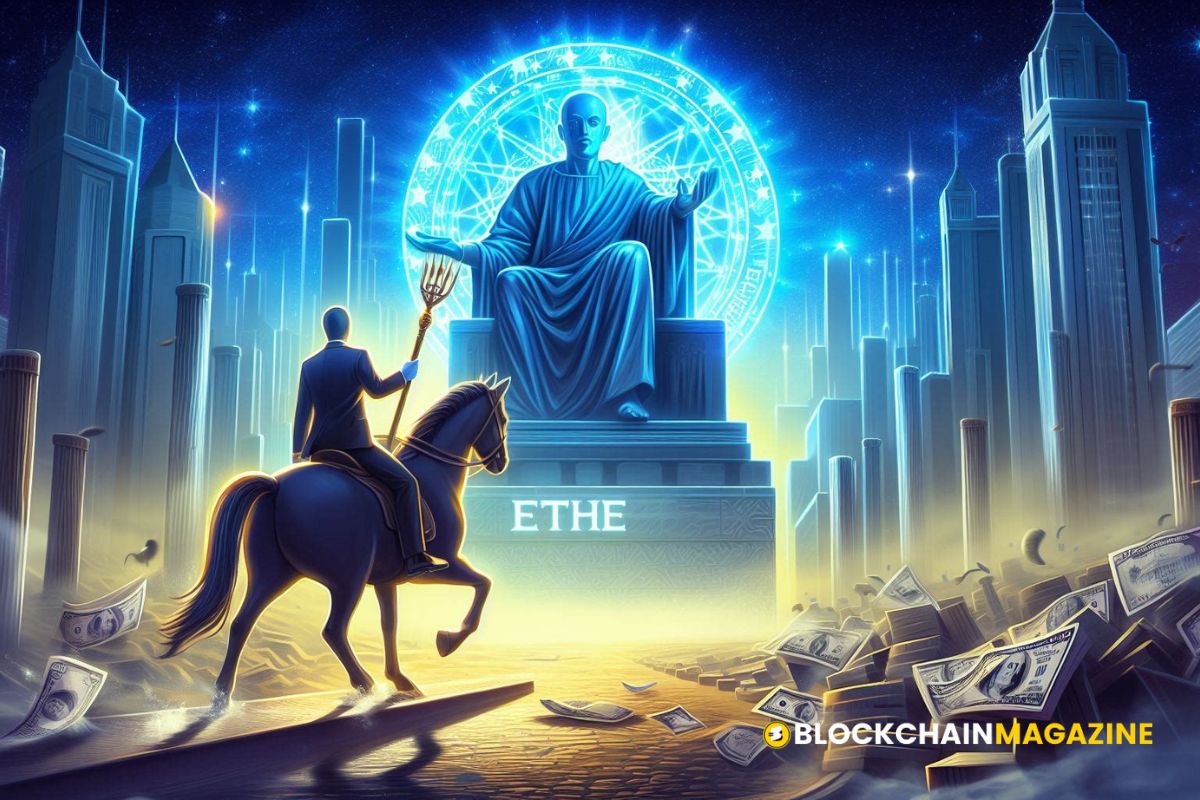Pixelverse and PlayDoge: Pioneering the Web3 Gaming and Meme Coin Landscape
The Dawn of Web3 Integration and Meme Coin Utility
The meteoric progression of the crypto gaming sector has been prominently marked by advancements in platforms such as Pixelverse and PlayDoge. These innovators are extending the frontiers of Web3 integration and meme coin functionality, revolutionizing digital asset interactions while presenting lucrative ventures for investors. The emergence of the Solana meme coin, Mew, on Pixelverse, alongside PlayDoge’s rising popularity, underscores the vibrant and potentially lucrative domain of Web3 gaming and meme coins.
Pixelverse’s Strategic Integration of Mew
Pixelverse has captured significant attention by embedding the Solana meme coin Mew into its Telegram-centric mini-games. This tactical fusion exemplifies Pixelverse’s prowess in incorporating beloved meme characters into its gaming ecosystem, thereby augmenting user engagement and expanding its audience reach.
Cross-Chain Synergies
The introduction of Mew into Pixelverse epitomizes a pivotal cross-chain synergy. Although the Mew token itself remains static, the intellectual property associated with the character is interwoven into Pixelverse’s mini-games, coexisting with other iconic figures such as Doge from Dogecoin. This strategic endeavor harnesses the universal appeal of these meme characters, thereby attracting a broader audience to Pixelverse.
Read more: Top Meme Coins to Watch in 2024 With 100X Potential
TON’s Rise and Tap-to-Earn Innovations
The Telegram Open Network (TON) has witnessed a surge in activity, significantly fueled by the burgeoning Tap-to-Earn games offered by platforms like Pixelverse. These games incentivize user engagement, thereby driving greater adoption of TON’s native assets. Additionally, Telegram’s ad revenue-sharing model, remunerated in TON, has further amplified the network’s popularity, attracting more creators and influencers to the ecosystem.
Tap-to-Earn Games: A New Epoch
Tap-to-Earn games have emerged as a pivotal trend in the Web3 gaming arena, providing incentives for users to remain active and engaged. Pixelverse and Notcoin are at the vanguard of this trend, offering compelling reasons for consistent user participation. With Mew’s integration into Pixelverse’s games, the platform’s momentum shows no signs of abating.
PlayDoge: Ascending in the Meme Coin Market
While Pixelverse expands its gaming universe, PlayDoge ($PLAY) is rapidly gaining traction in the meme coin market. Having recently launched in its presale phase, PlayDoge has already eclipsed the $5.3 million mark. PlayDoge introduces a unique Play-to-Earn (P2E) model inspired by the 1990s virtual pet Tamagotchi. Users nurture their digital pets, ensuring they are fed, rested, and entertained, earning $PLAY tokens in return. This model not only entertains but also establishes a value-based economy around the token.
Nostalgia Meets Rewards
The game’s nostalgic allure, combined with the opportunity to earn rewards, has made PlayDoge an enticing proposition for both crypto enthusiasts and casual gamers. Available for download on both Google Play and the Apple Store, the game is accessible to a wide audience.
Multichain Functionality and Staking Incentives
Initially launched on the BNB Smart Chain, PlayDoge has since bridged to Ethereum, offering investors the dual benefits of BSC’s low fees and Ethereum’s robust decentralization. This strategic move has amplified the total presale raise, positioning PlayDoge for potential listing on major exchanges like Binance. PlayDoge also offers substantial staking rewards with an annual percentage yield (APY) of 109%. Over 173 million $PLAY tokens have been staked, reflecting strong community interest and participation.
Community Engagement and Market Potential
PlayDoge’s community engagement strategy includes a share-to-earn protocol that incentivizes users to promote the token on social media platforms like X and Telegram. Participants earn points redeemable for $PLAY tokens, fostering a vibrant and active community. The combination of PlayDoge’s unique P2E model, robust presale performance, and strategic market positioning makes it a formidable contender in the meme coin space.
Analysts and commentators, including prominent YouTube trading expert Crypto Boy and crypto analyst Jacob Bury, have highlighted PlayDoge’s potential for significant returns, with predictions ranging from 10x to 100x gains.
Comparative Analysis: Pixelverse vs. PlayDoge
Pixelverse’s PixelTap game emphasizes engaging gameplay with a cyberpunk theme, incorporating both PvE and PvP elements that require strategic acumen. PlayDoge’s game, inspired by Tamagotchi, melds nostalgia with a P2E model, allowing users to earn $PLAY tokens by nurturing their digital pets. Pixelverse’s PIXFI token will play an integral role in its ecosystem, facilitating transactions and staking, with an anticipated airdrop adding excitement for early adopters. PlayDoge’s $PLAY token is already in use for transactions and staking, providing immediate utility and significant staking rewards.
Both platforms have cultivated strong communities. Pixelverse leverages its engaging narrative and PixelTap game to attract players, while PlayDoge focuses on delivering a unique P2E experience and engaging community activities. PlayDoge’s presale triumph and active social media strategy reflect its robust market presence and growing appeal.
Stay informed with daily updates from Blockchain Magazine on Google News. Click here to follow us and mark as favorite: [Blockchain Magazine on Google News].
Get Blockchain Insights In Inbox
Stay ahead of the curve with expert analysis and market updates.
latest from tech
Disclaimer: Any post shared by a third-party agency are sponsored and Blockchain Magazine has no views on any such posts. The views and opinions expressed in this post are those of the clients and do not necessarily reflect the official policy or position of Blockchain Magazine. The information provided in this post is for informational purposes only and should not be considered as financial, investment, or professional advice. Blockchain Magazine does not endorse or promote any specific products, services, or companies mentioned in this posts. Readers are encouraged to conduct their own research and consult with a qualified professional before making any financial decisions. The featured image used is just a creative depiction of the title and it does not intend to hurt sentiments of any person or institution. If it hurts anyone sentiments, please do not hesitate to reach out to Blockchain Magazine.

 Bitcoin
Bitcoin  Ethereum
Ethereum  XRP
XRP  Tether
Tether  Solana
Solana  USDC
USDC  Dogecoin
Dogecoin  Cardano
Cardano  Lido Staked Ether
Lido Staked Ether  TRON
TRON  Wrapped Bitcoin
Wrapped Bitcoin  Chainlink
Chainlink  Wrapped stETH
Wrapped stETH  Avalanche
Avalanche  Sui
Sui  Stellar
Stellar  Litecoin
Litecoin  Toncoin
Toncoin  Shiba Inu
Shiba Inu  LEO Token
LEO Token  Hedera
Hedera  USDS
USDS  Hyperliquid
Hyperliquid  Polkadot
Polkadot  WETH
WETH  MANTRA
MANTRA  Bitcoin Cash
Bitcoin Cash  Bitget Token
Bitget Token  Ethena USDe
Ethena USDe  Wrapped eETH
Wrapped eETH  Uniswap
Uniswap  Monero
Monero  NEAR Protocol
NEAR Protocol  Pepe
Pepe  WhiteBIT Coin
WhiteBIT Coin  Aave
Aave  Ondo
Ondo  Bittensor
Bittensor  Aptos
Aptos  Internet Computer
Internet Computer  Dai
Dai  Official Trump
Official Trump  Mantle
Mantle  Ethereum Classic
Ethereum Classic  Tokenize Xchange
Tokenize Xchange  OKB
OKB  Gate
Gate  Sonic (prev. FTM)
Sonic (prev. FTM)  sUSDS
sUSDS 



